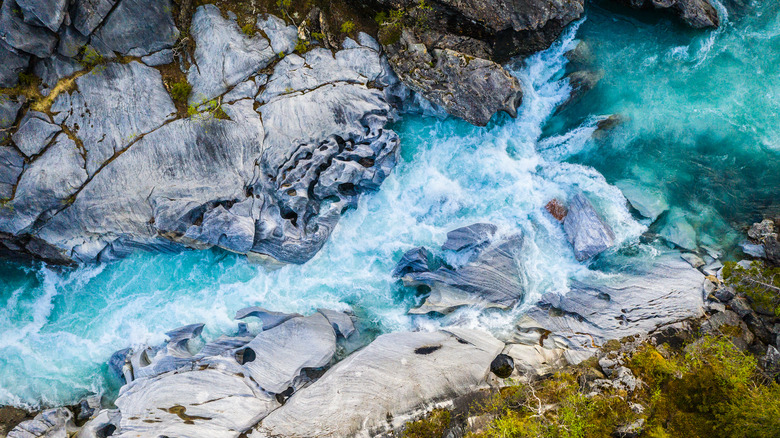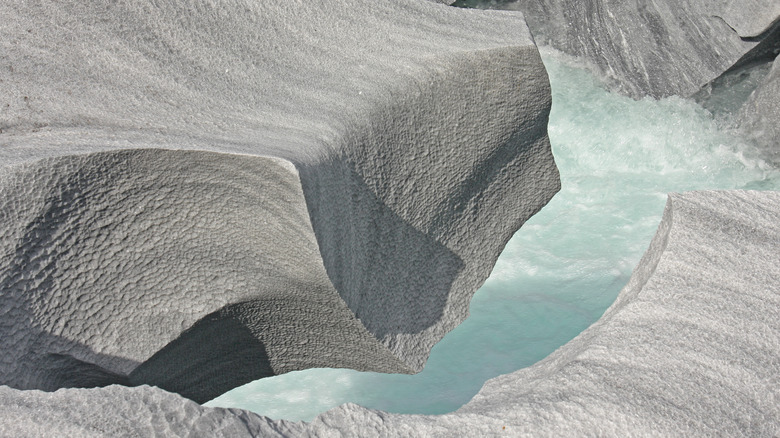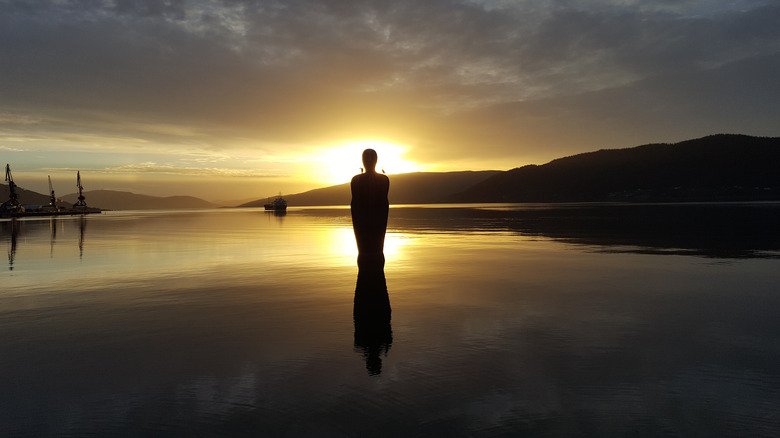The Difficult Hike To One Of Europe's Most Marvelous Natural Wonders Is So Rewarding
Helgeland, the southernmost district of northern Norway, boasts natural beauty in spades, encompassing the UNESCO-protected Vega islands and the legendary Seven Sisters mountainsalong with deep and spectacular fjords. And among the many treasures hiding in the folds of Helgeland's wild terrain is Marmorslottet, which means "marble castle" in English. Sculpted by the Glomåga River and other natural forces over thousands of years, this geological masterpiece is like a scene from a fairytale, with its mesmerizing turquoise water and undulating swirls, giant cauldrons, and bold protrusions of marble splaying out in all directions. This is a great place to take a sightseeing break and spend a few hours appreciating the sheer awesomeness and ingenuity of nature.
However, the short trek to Marmorslottet is not an easy one. One of many scenic but challenging trails in the region, the 1.5-mile round-trip hike traverses some steep areas that can be slippery in wet weather. Wooden footbridges make navigating the first part of the trail a bit easier, but there's one extremely tricky section at the very end.
Getting to Marmorslottet
Here are a few tips to help you hike to Marmorslottet safely and get the most out of your experience. First, the best time of year for this adventure is in the warmer months between May and October. This is also the best time of year to visit Norway, in general, unless you want to don a pair of skis or experience The Polar Night. To reach the trailhead parking lot, drive 28 miles southeast from the town of Mo i Rana. As you approach the trailhead, go slowly on the narrow road, which passes close to houses and farms in some places.
After departing from the parking lot, the trail winds through the forest over a series of wooden footbridges. At the fork in the trail, stay to the left. Right before reaching the river, the trail drops sharply down an area of slick and precarious rock. Proceed with caution in this section. When you reach the canyon, it's recommended that you remove your shoes to avoid damaging the fragile marble. This might seem like a strange suggestion, but in addition to preserving the rock for future generations, it will actually provide a whole new dimension to your tactile experience by allowing your feet to feel the marvelously textured rock. Besides the marble, the river's a glorious thing to behold, too. However, the current is strong, so be careful, especially if you're visiting with children.
Explore the area around Marmorslottet
After your hike to Marmorslottet, there's a lot more to explore in this part of Helgeland. The district's largest city, Mo i Rana, is a short drive away, offering a taste of local culture and cuisine. Stroll around the downtown area along the waterfront and check out the 36-foot tall granite statue known as Havmannen, which means "the man from the sea" in English. The impressive statue, a creation of the English artist Antony Gormley, depicts a man staring pensively out over the fjord. The town also boasts a thriving music and theater scene, an interactive science museum, and some fantastic restaurants.
One of the most striking natural features in the area — the Svartisen glacier — is located around 19 miles north of Mo i Rana. As the second largest glacier in the country, it envelopes 137 square miles of mountains and fjords. You can only access the glacier by boat or ferry, but the experience is well worth the trouble if you have the time. The most efficient way to get there is via the Engen Skyssbåt ferry from the Holand and Brasetvik quays across the Holandsfjorden to a section of glacier known as the Vestisen ice cap. Beyond the glacier itself, the Saltfjellet-Svartisen National Park is yet another breathtaking European national park that awaits exploration. The park is actually one of the most pristine wilderness areas in all of Norway.


